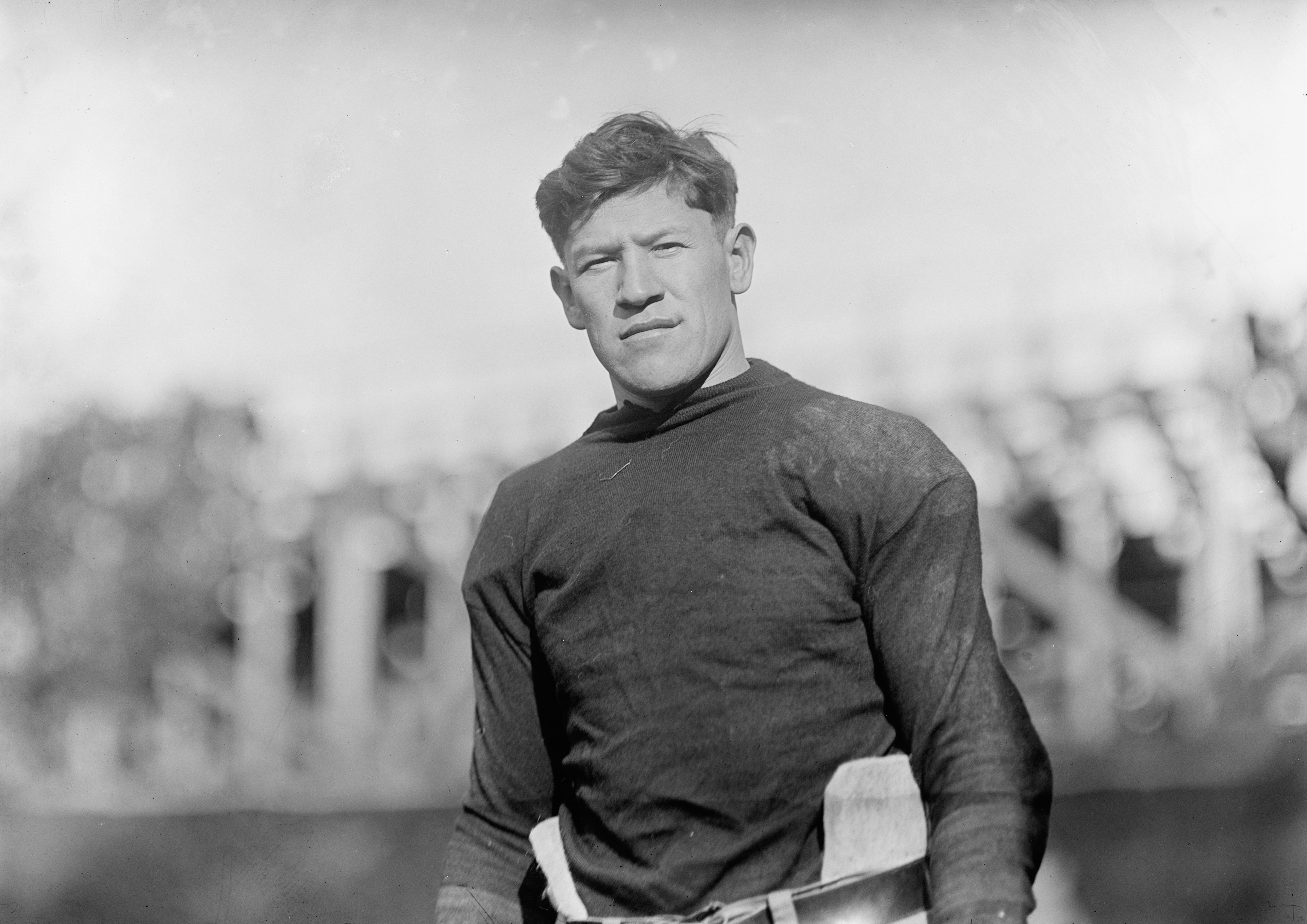Who is Jim Thorpe?
Shedding light on the forgotten legendary history of Indigenous athlete, Jim Thorpe.
Jim Thorpe, also known as Wa-Tho-Huk, or The Bright Path, is the greatest athlete unknown to mankind. His career spanned across decades, and he excelled in football, baseball, track and field, basketball, hockey, and even ballroom dancing. While there have been a handful of dual-sport professional athletes throughout history, Thorpe’s dominance across the entire sporting world has truly never been replicated.
Athletic successes of Jim Thorpe
Thorpe was born near Prague, Indian Territory (now in Oklahoma) on May 28, 1888. He grew up as part of the Sac and Fox nation and graduated from Haskell Indian School and Carlisle (Pennsylvania) Indian Industrial School.
In 1907, Thorpe’s undefeated athletic era began. His first discovery into sports came through varsity track and field, where he broke each of his school’s high jump records.
But track just wasn’t enough for Thorpe. He begged his coach to let him tryout for the football team, and quickly made his mark. During the tryout, an article by History explained that Thorpe “eluded more than 30 players in an open-field drill,” shocking his coach, and immediately landed him a spot on the team.
His innate athletic abilities didn’t end there, as he continued to dominate in basketball, boxing, lacrosse, swimming, hockey, handball and tennis, even winning an intercollegiate ballroom dancing championship.
In 1909, Thorpe signed a contract to play minor league baseball, where he would play for four seasons before being signed into the major leagues by the New York Giants, where he would go on to be named a two-sport star. During that time, Thorpe was scouted by his previous coach to play football at Carlisle. Thorpe scored 25 touchdowns at Carlisle, carrying his team to a 23-2-1 record and a National Championship.
Thorpe also competed as part of the American team during the 1912 Summer Olympics, where he won 2 gold medals for the decathlon and pentathlon—two sports he never engaged in professionally before the Olympics. At this time, however, the Olympics prohibited professional athletes from competing, and his medals were rescinded because he was found to be violating the Olympic’s former amateur policy. In 1983, the medals were returned to his family and his achievements were recognized by the Olympic Committee in official records in 2022.
Between baseball and football, Thorpe would dedicate 20 years to these two sports. Without failure, he led his teams to various championships. In one instance, he hit three homeruns in one game for the New York Giants, and led his team to three Ohio League Championships during his time with Canton Ohio Bulldogs.
For one year in 1920, Thorpe was unanimously voted as the first president of the American Professional Football Association, later renamed as the National Football League.
The PBS wrote that, in 1950 and many years following, Thorpe was featured in various Halls of Fame. Other honors included Oklahoma recognizing a state-wide day dedicated to Thorpe, the Postal Service commemorating him with his own stamp, an annual NFL award named after him that is awarded to athletes of exceptional athletic ability and character, and even the renaming of an entire Pennsylvania town.
Decades after his death, the House of Congress and ABC’s Wide World of Sports honoured Thorpe as the Athlete of the Century.
In 2024, President Joe Biden awarded him the Presidential Medal of Freedom, one of the nation’s highest civilian honours. A century later and his name continues to reign the athletic world for his benevolence, remarkable athletic abilities, and courage as the first Native American to win an Olympic gold medal.
Indigenous legacy
Thorpe’s Indigenous legacy commenced when he broke all expectations of Euro-Americans at the time. The National Endowment for the Humanities explained that the Euro-Americans viewed the Indigenous as an inferior people that were “nearing extinction.” Thorpe shattered these beliefs the moment he was titled “the greatest all-around athletic marvel the world has ever seen.”
For the Indigenous communities who were facing land assimilations and subjected to horrendous crimes by the federal government, Thorpe was their shining knight in armor, who showcased to the world that Native Americans were as human as everyone else and as capable of succeeding as any Euro-American.
After retiring, Thorpe co-founded the Indian Center, a casting company that helped Native Americans find movie roles. He continued to dedicate his life to the Native community, gaining the nickname “Akapamata,” meaning “Caregiver,” for his undivided love and care for the Indigenous people.
Jim Thorpe was a king, legend, historical figure, and renowned athlete.

